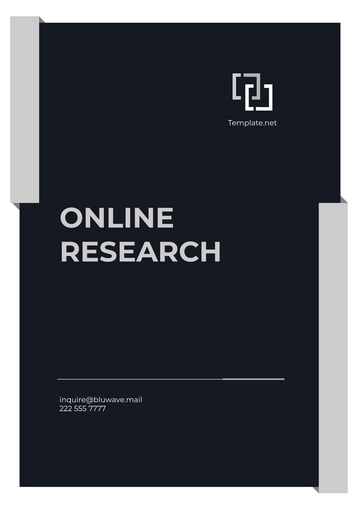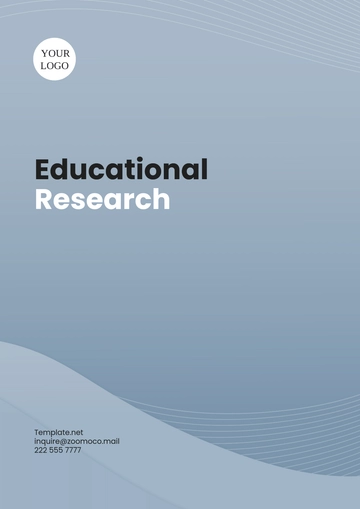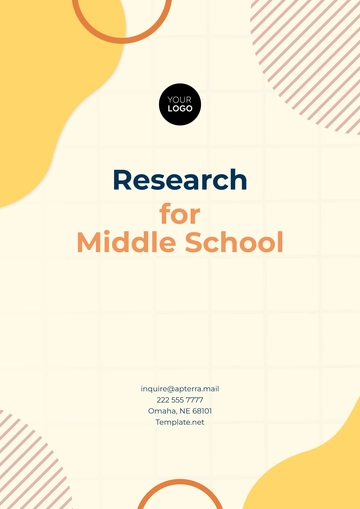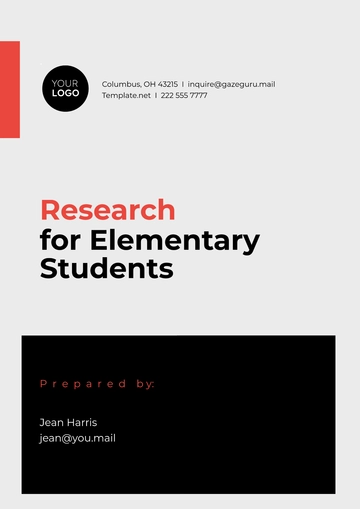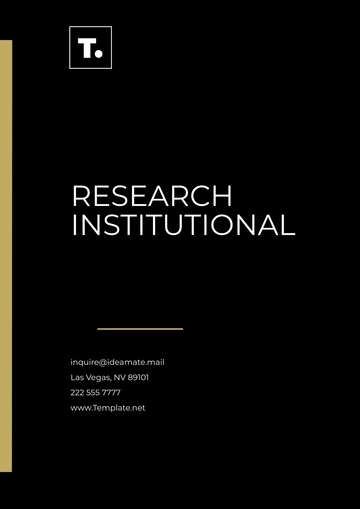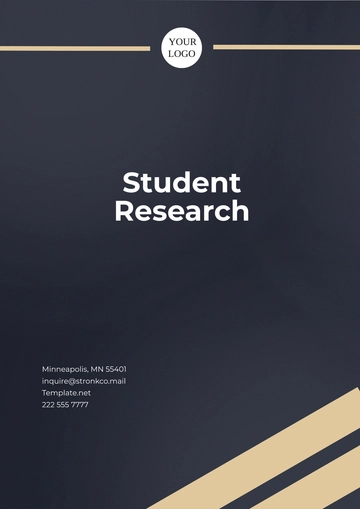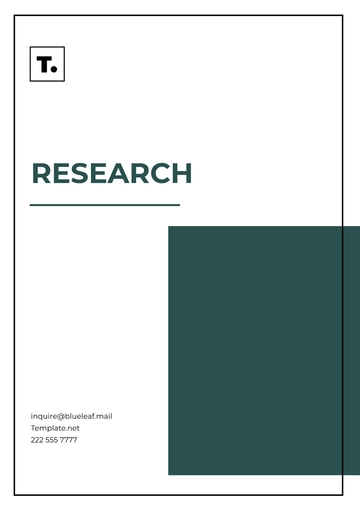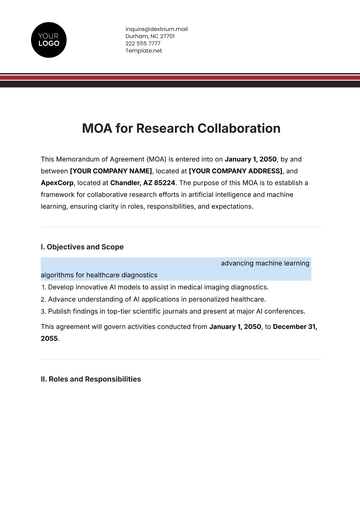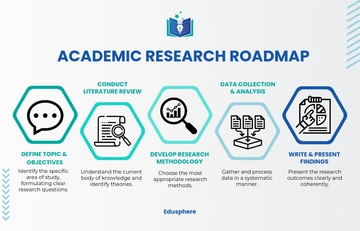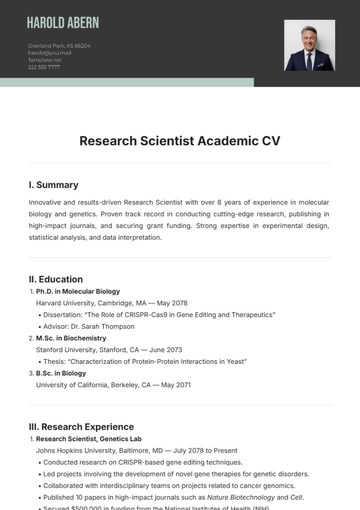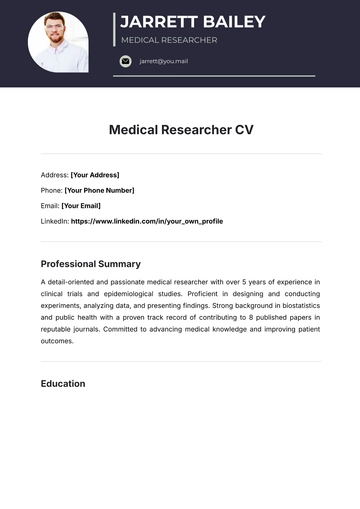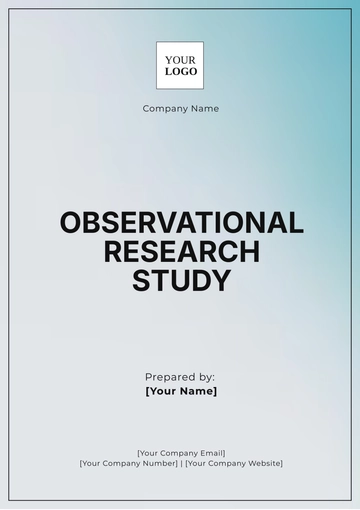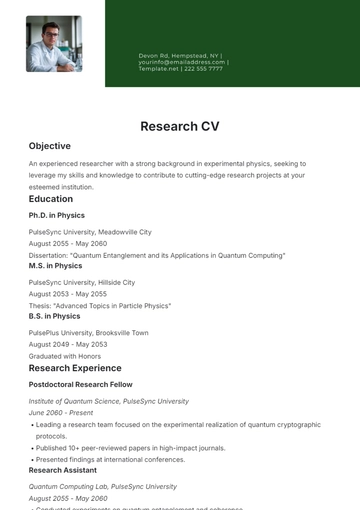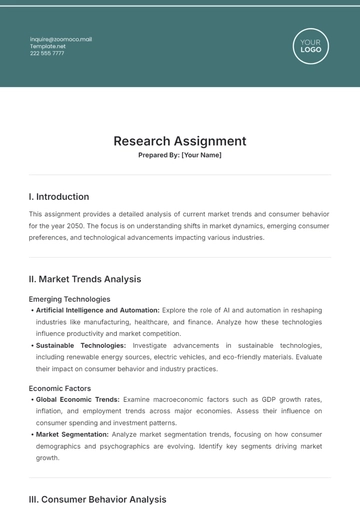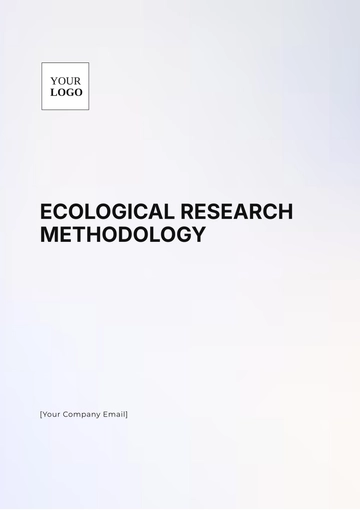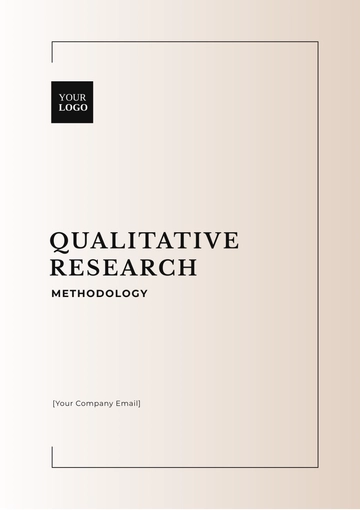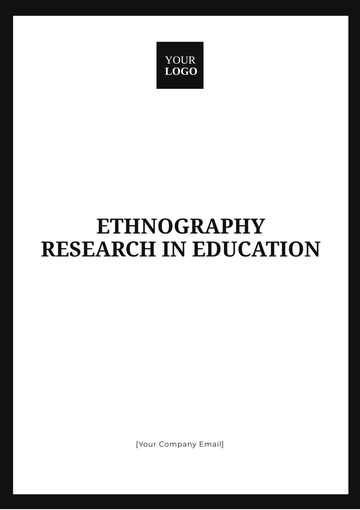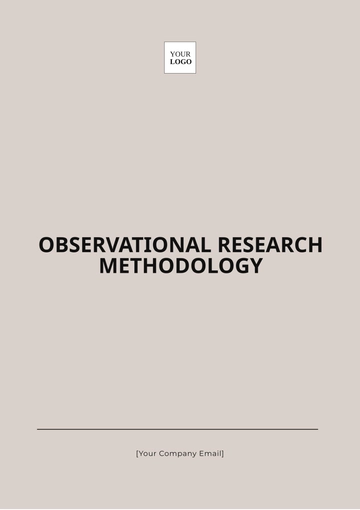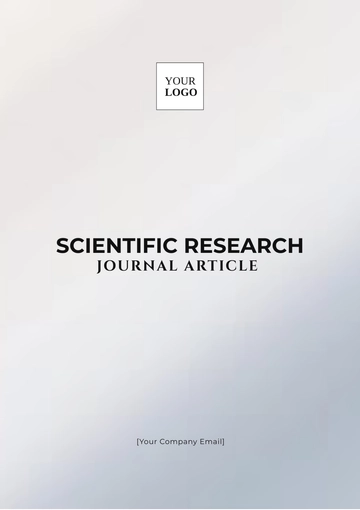Free Academic Research Article Summary
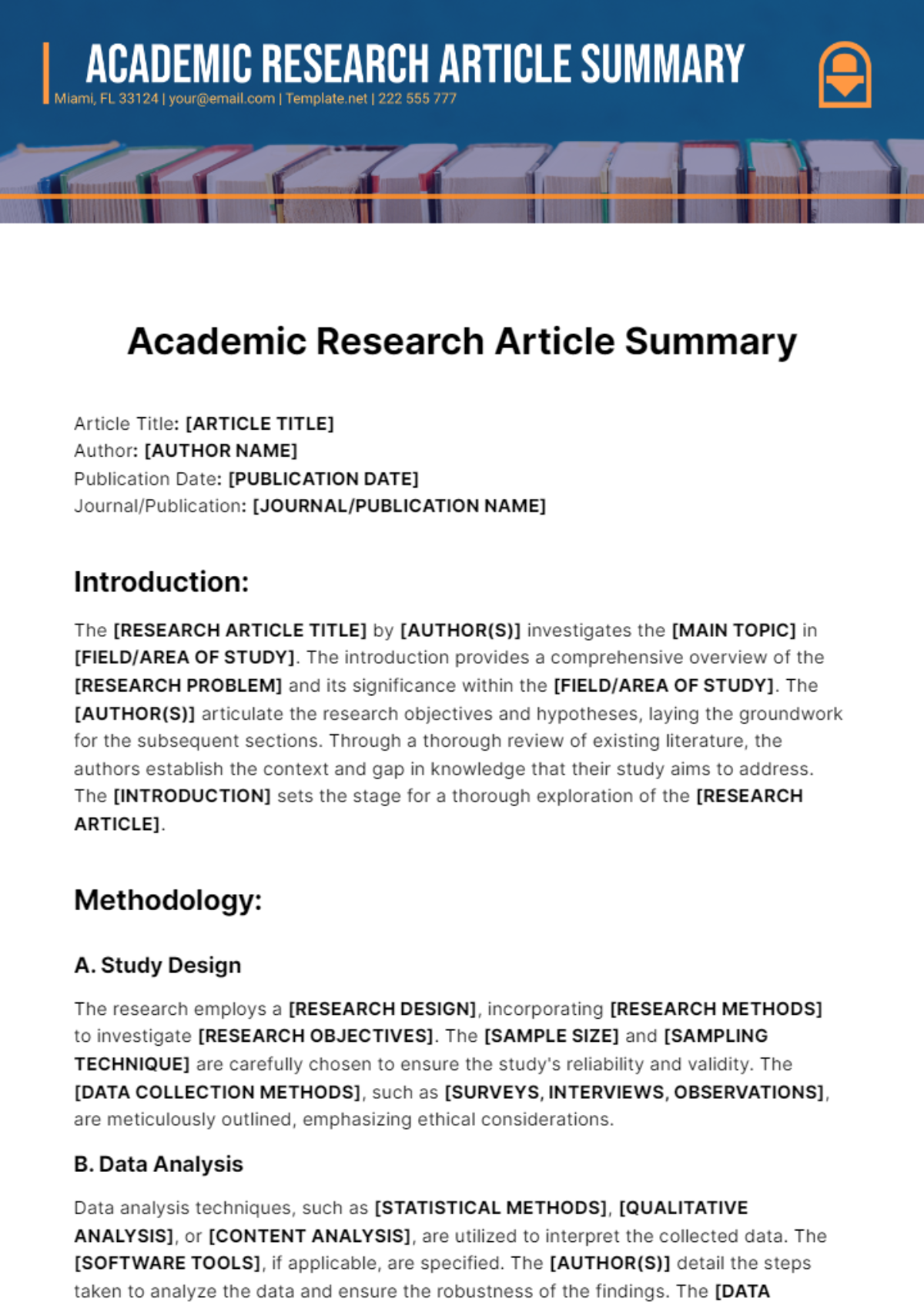
Article Title: [ARTICLE TITLE]
Author: [AUTHOR NAME]
Publication Date: [PUBLICATION DATE]
Journal/Publication: [JOURNAL/PUBLICATION NAME]
Introduction:
The [RESEARCH ARTICLE TITLE] by [AUTHOR(S)] investigates the [MAIN TOPIC] in [FIELD/AREA OF STUDY]. The introduction provides a comprehensive overview of the [RESEARCH PROBLEM] and its significance within the [FIELD/AREA OF STUDY]. The [AUTHOR(S)] articulate the research objectives and hypotheses, laying the groundwork for the subsequent sections. Through a thorough review of existing literature, the authors establish the context and gap in knowledge that their study aims to address. The [INTRODUCTION] sets the stage for a thorough exploration of the [RESEARCH ARTICLE].
Methodology:
A. Study Design
The research employs a [RESEARCH DESIGN], incorporating [RESEARCH METHODS] to investigate [RESEARCH OBJECTIVES]. The [SAMPLE SIZE] and [SAMPLING TECHNIQUE] are carefully chosen to ensure the study's reliability and validity. The [DATA COLLECTION METHODS], such as [SURVEYS, INTERVIEWS, OBSERVATIONS], are meticulously outlined, emphasizing ethical considerations.
B. Data Analysis
Data analysis techniques, such as [STATISTICAL METHODS], [QUALITATIVE ANALYSIS], or [CONTENT ANALYSIS], are utilized to interpret the collected data. The [SOFTWARE TOOLS], if applicable, are specified. The [AUTHOR(S)] detail the steps taken to analyze the data and ensure the robustness of the findings. The [DATA ANALYSIS] section provides insights into the research outcomes.
Results:
The results section presents the findings of the study in a clear and organized manner. Key [VARIABLES] are identified and analyzed, providing insights into the [RESEARCH QUESTION]. The [AUTHOR(S)] utilize tables, graphs, and charts to enhance data visualization and facilitate comprehension. Significant [PATTERNS/TRENDS] are highlighted, contributing to the understanding of the [RESEARCH PROBLEM]. The [RESULTS] shed light on the outcomes of the research.
The results section of the research article offers a meticulous presentation of the study's findings, meticulously arranged for clarity and coherence. Key [VARIABLES], pivotal to understanding the [RESEARCH QUESTION], are meticulously identified and subjected to thorough analysis. Through this process, the [AUTHOR(S)] aim to provide deep insights into the core inquiry driving the research.
Discussion:
A. Interpretation of Findings
In this section, the [AUTHOR(S)] interpret the results in relation to the [RESEARCH OBJECTIVES] and existing literature. They discuss the implications of the findings and their relevance to theory and practice. Noteworthy limitations and biases are acknowledged, providing transparency and opportunities for future research. The [DISCUSSION] section critically analyzes the research outcomes.
B. Theoretical Contributions
The study makes significant contributions to the [FIELD/AREA OF STUDY] by [IDENTIFYING NEW INSIGHTS, VALIDATING EXISTING THEORIES, PROPOSING A NEW FRAMEWORK, ETC.]. The [AUTHOR(S)] contextualize their findings within the broader scholarly discourse, highlighting the theoretical implications and potential avenues for further investigation. The [THEORETICAL CONTRIBUTIONS] section highlights the academic significance of the research.
Recommendations:
A. Practical Implications
Based on the findings, practical recommendations are offered for stakeholders in the [FIELD/AREA OF STUDY]. These recommendations aim to address [SPECIFIC ISSUES/CHALLENGES] identified in the research. Strategies for implementation are outlined, considering the [CONTEXT] and [CONSTRAINTS] faced by practitioners.
B. Policy Implications
The study provides insights that can inform policy decisions at [LOCAL/NATIONAL/INTERNATIONAL] levels. Policymakers can utilize the recommendations to [ADDRESS SOCIAL ISSUES/IMPROVE ECONOMIC CONDITIONS/ENHANCE PUBLIC SERVICES]. The [AUTHOR(S)] advocate for evidence-based policies grounded in the research findings.
Future Research Directions:
A. Unexplored Areas
Despite the contributions of this study, there remain several avenues for further research. Areas that warrant exploration include [EMERGING TRENDS/UNDERSTUDIED PHENOMENA/ALTERNATIVE METHODOLOGIES]. The [AUTHOR(S)] encourage scholars to build upon their work and delve deeper into these unexplored areas.
B. Longitudinal Studies
Longitudinal studies could provide valuable insights into the [LONG-TERM EFFECTS/TEMPORAL DYNAMICS] of the phenomena under investigation. By tracking changes over time, researchers can gain a more comprehensive understanding of [COMPLEX PROCESSES/DYNAMIC RELATIONSHIPS].
References:
The references section lists the sources cited throughout the research article. The [AUTHOR(S)] adhere to the [CITATION STYLE GUIDE] for accuracy and consistency. The references encompass a wide range of scholarly literature, spanning [JOURNALS, BOOKS, REPORTS, ETC.], to support the arguments and findings presented in the article.
key points:
Interpretation of Findings: In the discussion section, the [AUTHOR(S)] analyze the research findings in relation to the [RESEARCH OBJECTIVES] and existing literature. They examine how the results contribute to the understanding of [KEY CONCEPTS/THEORIES] and shed light on [SPECIFIC ASPECTS/PHENOMENA] within the [FIELD/AREA OF STUDY].
Implications for Theory and Practice: The authors discuss the broader implications of their findings, both theoretically and practically. They explore how the results can advance [THEORETICAL FRAMEWORKS/MODELS] and provide insights for [PRACTICAL APPLICATIONS/REAL-WORLD DECISION-MAKING] in [RELEVANT CONTEXTS/INDUSTRIES].
Acknowledgment of Limitations: Transparently, the [AUTHOR(S)] address any limitations or biases present in the study. This includes considerations such as [SAMPLE SIZE/SCOPE] limitations, [DATA COLLECTION/ANALYSIS] challenges, and [EXTERNAL FACTORS/CONTEXTUAL VARIABLES] that may have influenced the outcomes.
Conclusion:
In conclusion, the [AUTHOR(S)] summarize the key findings and their implications for [FIELD/AREA OF STUDY]. They reiterate the significance of the study and its contributions to the existing body of knowledge. The [RESEARCH ARTICLE TITLE] concludes with suggestions for future research directions, emphasizing the ongoing pursuit of knowledge in [FIELD/AREA OF STUDY].
- 100% Customizable, free editor
- Access 1 Million+ Templates, photo’s & graphics
- Download or share as a template
- Click and replace photos, graphics, text, backgrounds
- Resize, crop, AI write & more
- Access advanced editor
Introducing the Academic Research Article Summary from Template.net, your ultimate tool for condensing scholarly works. This editable and customizable template streamlines the summarization process, offering seamless editing in our Ai Editor Tool. Craft concise summaries effortlessly and elevate your academic pursuits with ease and precision.


